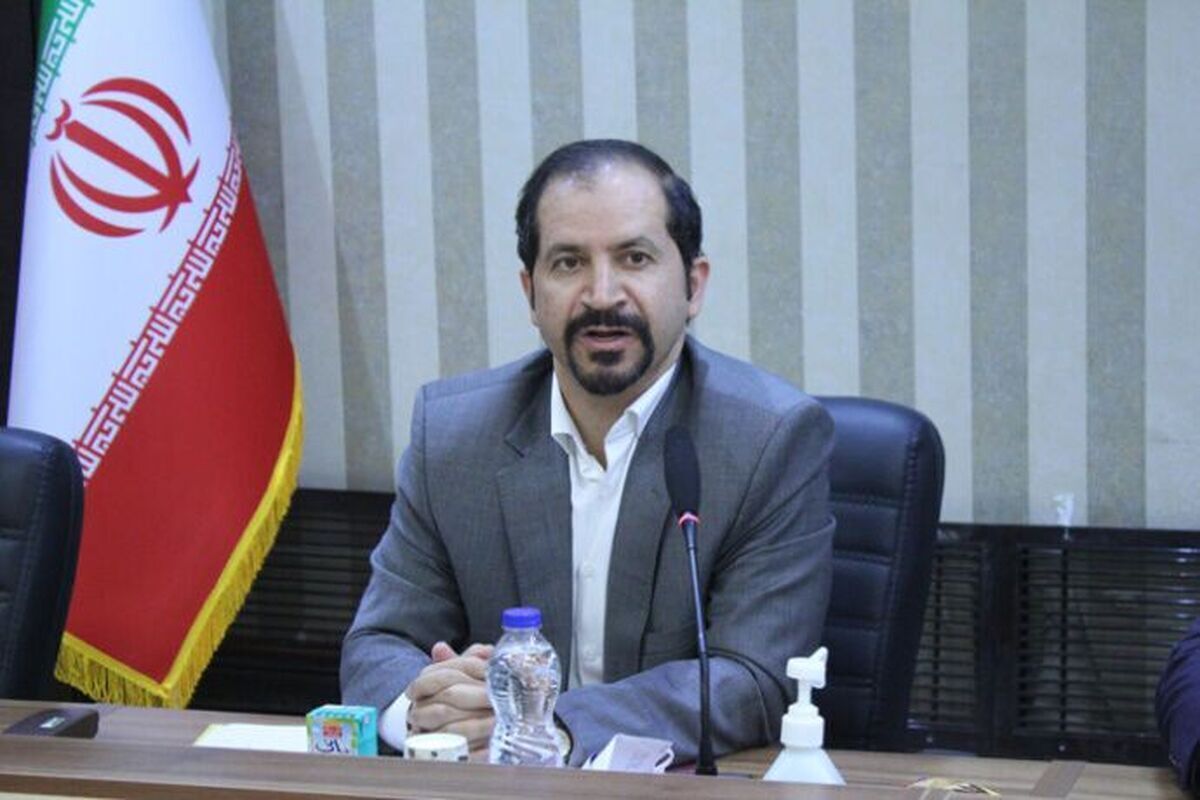Top News of Last Week with ANA

Azad News Agency (ANA) published a number of scientific and technological news during the past week whose top ones are as follows:
Producing Fertilizer without Carbon Emissions
Researchers at ETH Zurich showed how nitrogen fertilizer could be produced more sustainably which is necessary not only to protect the climate, but also to reduce dependence on imported natural gas and to increase food security.
Intensive agriculture is possible only if the soil is fertilised with nitrogen, phosphorus and potassium. While phosphorus and potassium can be mined as salts, nitrogen fertiliser has to be produced laboriously from nitrogen in the air and from hydrogen. And, the production of hydrogen is extremely energy-intensive, currently requiring large quantities of natural gas or -- as in China -- coal. Besides having a correspondingly large carbon footprint, nitrogen fertilizer production is vulnerable to price shocks on the fossil fuels markets, the Environmental Research Letters reported.
Paolo Gabrielli, Senior Scientist at the Laboratory of Reliability and Risk Engineering at ETH Zurich, has collaborated with Lorenzo Rosa, Principal Investigator at Carnegie Institution for Science in Stanford, US, to investigate various carbon-neutral production methods for nitrogen fertiliser. In a study published in the journal Environmental Research Letters, the two researchers conclude that a transition in nitrogen production is possible and that such a transition may also increase food security. However, alternative production methods have advantages and disadvantages.
Iranian Knowledge-Based Company Finds Solution to Reduce Consumption of Pesticides in Farms
A knowledge-based company in Iran prepared maps to identify areas prone to plant diseases at appropriate times in a bid to reduce the consumption of pesticides in farms.
The Iranian knowledg-based company has prepared the zoning maps of disease-prone areas in crops, taking into account the favorable conditions for the occurrence of disease in the plants.
The map measures the amount of pesticides’ consumption by considering the growth stages of plants and using satellite images.
This maps help to increase the yield, improve the quality of products and prevent the excessive use of pesticides and damages caused by the spread of disease.
Quake-Resistant Light Composite Panels Produced by Iranian Company
Iranian researchers at Islamic Azad University’s Bojnourd branch produced special light composite panels (LCP) which can resist against earthquake.
Mohammad Reza Hosseini Ma’asoum, the vice-president of Islamic Azad University’s Bojnourd branch, said that an agreement has been signed between the University and Arta Mehrgostaran Khavaran company, stationed at the New Technologies Incubator Center of the University, to produce the new LCPs.
“Light composite panel (LCP) is a new ceiling that meets the main needs of a structural system to an extent, and the weight of each square meter of this panel is approximately 80 kg (other panels existing in the market weigh 240 to 450 kg),” he added
Hosseini Ma’asoum noted that the new LCPs, which are a combination of steel and light concrete, reduce the weight of the skeleton and the dimensions of the foundation, adding that the product is completely prefabricated in the plant.
Researchers in Iran Find New Method for Targeted Treatment of Liver Cancer
Iranian researchers at University of Tehran succeeded in achieving a method that helps the targeted treatment of liver cancer cells by using a recombinant peptide.
“In this treatment method, an AMP (adenosine monophosphate) with anti-cancer property (bovicin HC5) produced by streptococcus bovis bacteria has been used,” said Zahra Haji Hassan, a faculty member of the Science and Technology department of University of Tehran and the executive manager of the research project titled ‘production of recombinant fusion of Bovicin HC5 and CPP for the treatment of liver cancer’.
Noting that by combining a CPP (cell penetrating peptide) with bovicin HC5 protein, its permeability into liver cells increases, she said, “This will cause the drug to enter the liver cancer cells in a targeted manner. In this method, this designed fusion was produced in E. coli bacteria recombinantly and its effectiveness on the liver cancer cells was proven.”
Iranian Researchers Manufacture Hybrid, Electric Bicycles
A group of Iranian engineers at Shahroud University of Technology produced six models of electric bicycles which can also be used in the hybrid form in addition to the possibility of using pedals and engine.
“Our research at Dynamotor Center located at Shahroud’s Science and Technology Park is focused on electric engines. Our produced bicycle is equipped with a ‘middle drive’ type engine that enjoys good stability and a long lifespan,” said Seyed Vahid Hosseini, a faculty member of Shahroud University of Technology.
He underlined that in this project, the Iranian researchers succeeded in indigenization of the bike’s battery, noting that the electric bicycle rides in three modes of ‘ordinary bicycle with pedals’, ‘engine-based movement without pedaling’ and ‘hybrid-based movement’.
“While riding a bicycle, a sensor measures the torque of the driver's leg and finds out whether the person intends to move or not, and in case of movement, the engine comes to the rider's aid,” Hosseini said.
Iranian Knowledge-Based Firm Indigenizes Spectroscopic Cameras
Researchers of a knowledge-based company stationed at Kashan Science and Technology Park in Central Iran succeeded in indigenization and commercialization of spectroscopic cameras with application in agriculture and food industries.
“The main application of this device is in analytical chemistry laboratories, nanophysics and agricultural laboratories,” said Ali Balouch, one of the researchers of the indigenization and commercialization of spectroscopic cameras project.
“By using spectroscopic cameras in the agricultural field, we can provide services in classification of agricultural products. It is also used in the food industry as well as assessment of the quality of synthesized materials,” he added.
Balouch noted that the company has so far sold its products to 30 Iranian universities for laboratory applications.
Iranian Company Invents New Method for Desalination of Brackish Water
A knowledge-based company in Iran managed to manufacture a device by using the electric exploding wire method, describing it as a new method for desalination of brackish water.
“The PNC1k-D device produces metal nanocolloids by using the electric exploding wire method on a laboratory scale,” Bahareh Kavani, the managing-director of the company stationed at the incubator center of Islamic Azad University’s Roudehen branch, told ANA.
“In this process, ionic impurities are removed from the aqueous solution based on an electrochemical technique and in the presence of anionic and cationic membranes,” she added.
Kavani explained that desalination of salty water with 95% and 85% efficiency, performance at pressure of 1 bar and ambient temperature, less energy consumption compared to other desalination methods, no need for pre-treatment and chemical supplements during the process, ability to adjust the output EC amount, membrane life span of more than five years, low operating cost and easy operation, arsenic removal device with card reader and plasma nanocolloid generator are the features of the exploding wire device.
Iran's PGPIC Petrochemical Company to Boost Production to 46 Million Tons in 4 Years
The Persian Gulf Petrochemical Industries Company (PGPIC) will increase its production capacity to 46 million tons by 2026, an official said.
PGPIC’s Director for Planning and Business Development Hassan Neshanzadeh Moghaddam said that the installed capacity of the company is planned to hit 46 million tons per year by 2026, adding that at present, the PGPIC produces 28 million tons per year.
The PGPIC’s strategy under the new leadership is to reach Germany’s BASF, which is achievable due to the existence of huge feedstock resources and knowledge-based companies in Iran, he added.
He added that the installed capacity of the holding is currently 28 million tons per year, which will reach 33 million tons once three new projects come online in the near future.
Iran Accelerates Drilling Oil Wells
Managing Director of the National Iranian Drilling Company (NIDC) Hamidreza Golpayegani said that the country has increased efforts to drill more oil wells.
“A sum of 75 wells have been drilled and completed since the start of this (Iranian) year (March 21) which is 22 drilling operations more than the same period last year,” Golpayegani said.
He noted that at present, the NIDC owns 73 light, heavy and super-heavy land and sea rigs, of which 61 are active, adding that the number will increase to 64 by the end of this year (March 20).
Golpayegani said that 46 of the company's rigs are operating in the operational areas of the National Iranian South Oil Company, adding, “We also had a 7% growth by performing nearly 5,000 operations in the technical and specialized services sector.”
Iran-Made Footrest Reduces Varicose Veins Pain, Backache
An Iranian technologist designed a special footrest which helps the return of the lower body’s blood to the heart, strengthening the posterior, anterior and plantar muscles of the leg.
“This product has applications in the fields of medicine, sports and health and it causes the lower limb’s blood to return to the heart and strengthens the posterior, anterior and plantar muscles of the leg and even the quadriceps,” Asra Askari, a faculty member of the physical education department of Islamic Azad University’s Gorgan branch, told ANA.
“The movable footrest helps to maintain freshness and well-being as much as possible, reduces fatigue, incidence of varicose veins, backache, abnormal shape of the lumbar vertebrae, impaired blood circulation in the legs, pain and cramping of the leg muscles, problems related to the pelvic bone in people sitting at desks (employees, students, etc.) and increases work efficiency,” she added.
Askari explained that the plate on which the foot is placed in the mobile footrest is in a ready position in the form of dorsiflexion movement, adding that when the person is busy, it helps the lower limb’s blood to return to the heart and strengthens the anterior leg muscle by putting the foot in a proper position.
Shaking Less Salt on Your Food at Table Reduces Heart Disease Risk
Adding additional salt to foods at a lower frequency is associated with a reduced risk of heart disease, heart failure and ischemic heart disease, according to a new study by Tulane University in New Orleans.
Even among those following a DASH-style diet, behavioral interventions to lessen salt consumption could further improve heart health, the Journal of the American College of Cardiology reported.
There's substantial evidence linking high sodium intake to high blood pressure, a major risk factor for cardiovascular disease. However, epidemiological studies investigating this link have produced conflicting results due to a lack of practical methods for assessing long-term dietary sodium intake. Recent studies suggest that the frequency at which an individual adds salt to their foods could be used to predict their individual sodium intake over time.
"Overall, we found that people who don't shake on a little additional salt to their foods very often had a much lower risk of heart disease events, regardless of lifestyle factors and pre-existing disease," said Lu Qi, MD, PhD, HCA Regents Distinguished Chair and professor at the School of Public Health and Tropical Medicine at Tulane University in New Orleans. "We also found that when patients combine a DASH diet with a low frequency of adding salt, they had the lowest heart disease risk. This is meaningful as reducing additional salt to food, not removing salt entirely, is an incredibly modifiable risk factor that we can hopefully encourage our patients to make without much sacrifice."
Iran Gains Self-Sufficiency in Production of High-Pressure Valves for Oil Industry
Industrial valves with application in oil, gas, petrochemical, steel and food industries, refineries and power plants with a class 2,500 pressure were produced and indigenized by an Iranian knowledge-based firm and installed at Isfahan refinery.
“Industrial valves were produced in a bid to develop and indigenize the product portfolio with application in the oil, gas, petrochemical, refining, food, steel and power plants industries,” Seyed Reza Hosseini Norouzi, the managing-director of the knowledge-based company, told ANA.
“The standard considered for the production of this product includes API300 and its complement API598,” he added, noting that the highest pressure in these two standards is equal to 2,500 pounds.
Hosseini Norouzi described the lowest pressure of the valves as class 150 and the highest pressure as class 2,500, saying, “The target market of our company is mainly oil, gas, petrochemical, mining and steel industries as well as the power plants, the National Iranian Oil Company and its subsidiaries.”
Iranian Company Finds Foreign Customers during Tehran Expo
Iranian researchers are now finding new ways to increase the country’s exports by making high-tech products at a highly competitive price, and as a result the neighboring countries of Iran are eyeing the cost-efficient opportunity of buying equipment from exhibitions held in Tehran.
Iranian Scientists Manufacture Ground Based Synthetic Aperture Radar
Iranian researchers at the faculty of Mapping and Geospatial Information Engineering of University of Tehran succeeded in designing and making Ground Based Synthetic Aperture Radar (GBSAR) with high penetrating power and ability to be used at any hour of the day and night.
“At present, this radar is undergoing laboratory testing in the form of student theses at the master's and doctoral level and it will be used in the real environment after checking its capabilities,” said Jalal Amini, a professor of the faculty of Mapping and Geospatial Information Engineering of the University of Tehran, who has succeeded in designing and making this radar with the help of graduate students of the University of Tehran.
“In microwave remote sensing, microwave bands of the electromagnetic spectrum are used, and among the capabilities of these waves is their permeability into ground, as well as the possibility of using them in any weather conditions and 24 hours a day while the optical remote sensing devices do not enjoy such capabilities,” he added.
Amini said that this type of ground radar sensor can be applied in detection of ancient monuments, the movements of existing bridges in urban areas, residential towers and subway stations, the auto-making industry to identify the amount of movement or deformation of each car part and even in medicine for assessing the heart rate and the amount of displacement and movement of the chest.
4155/v

























